Are you curious about which snakes look like copperheads? Copperheads are venomous snakes that are commonly found in North America. Unfortunately, many other types of snakes are often mistaken for copperheads, leading to their unnecessary killing.
In this article, we will list the top eight snakes that look like copperheads, along with their pictures and descriptions. We will also discuss why these snakes are commonly mistaken for copperheads and how to differentiate them from the real copperheads.
You are reading: The Top 8 Snakes That Look Like Copperheads
So, if you want to learn more about these lookalike snakes and how to identify them, keep reading!
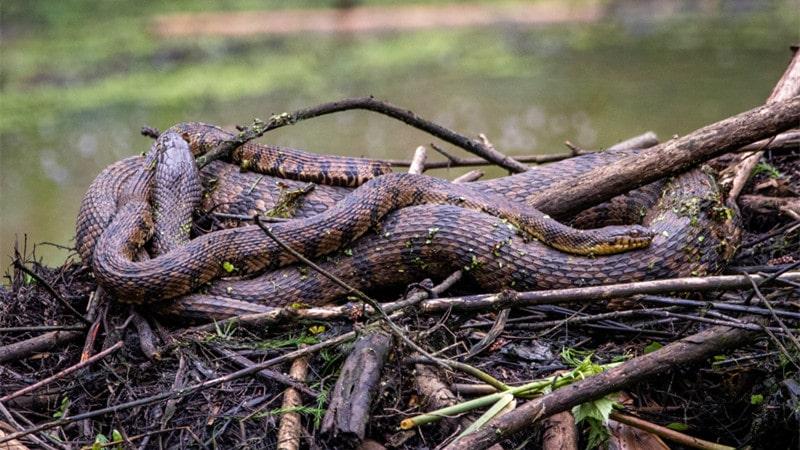
The Top Eight Snakes That Look Like Copperheads
Corn Snake
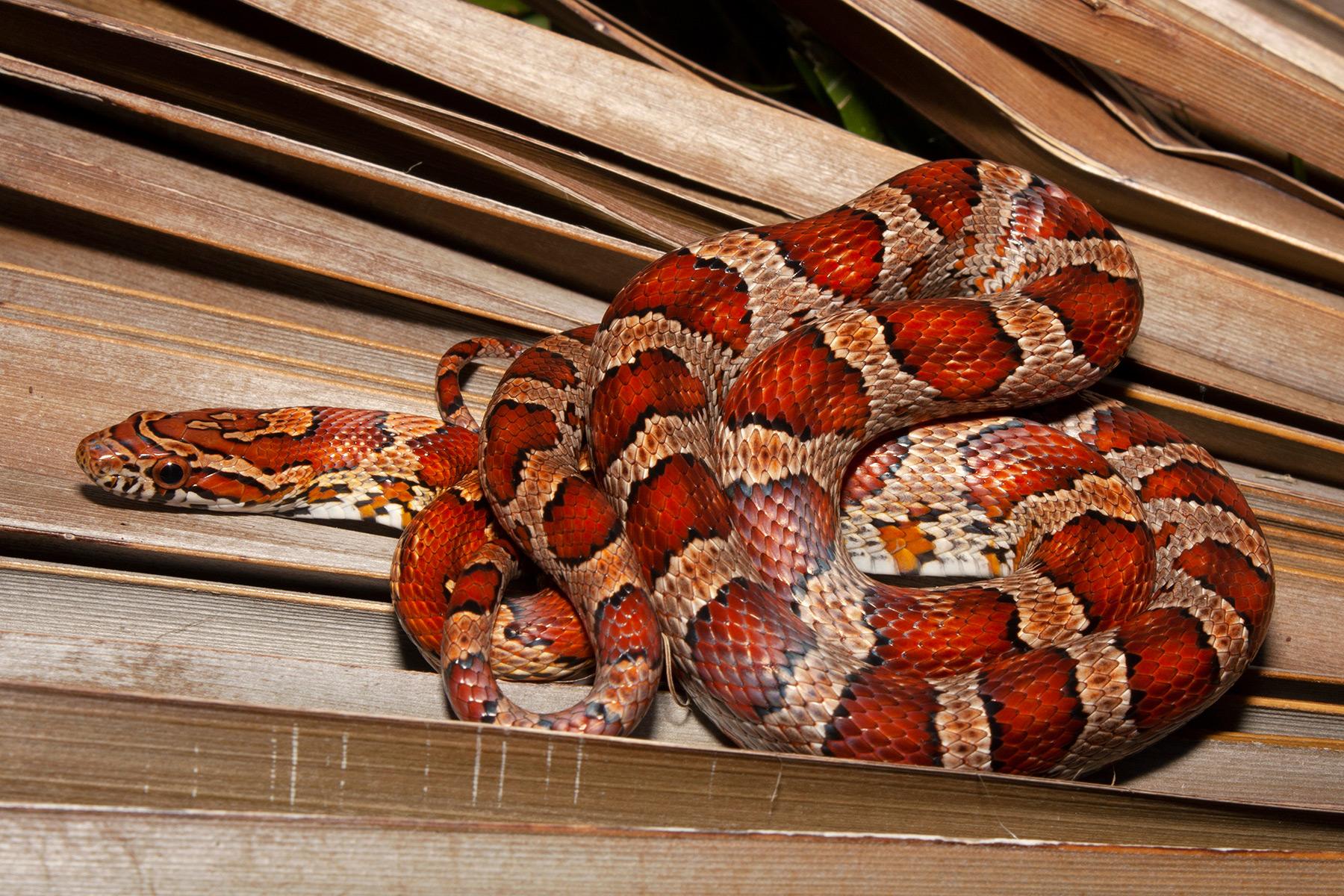
Corn snakes are a species of North American rat snake that are often mistaken for copperheads due to their similar appearance. They are slender, orange or brownish-yellow snakes with a pattern of large, red blotches outlined in black down their backs.
Along their bellies are distinctive rows of alternating black and white marks, which resemble a checkerboard pattern. The name corn snake may have originated from the similarity of these markings to the checkered pattern of kernels of maize or Indian corn.
Corn snakes are found throughout the southeastern and central United States and are most abundant in Florida and other southeastern states. While copperheads are venomous and dangerous to humans, corn snakes are harmless and lack functional venom.
However, they are often killed as a result of being mistaken for copperheads. e corn snake is one of them.
Northern Water Snake
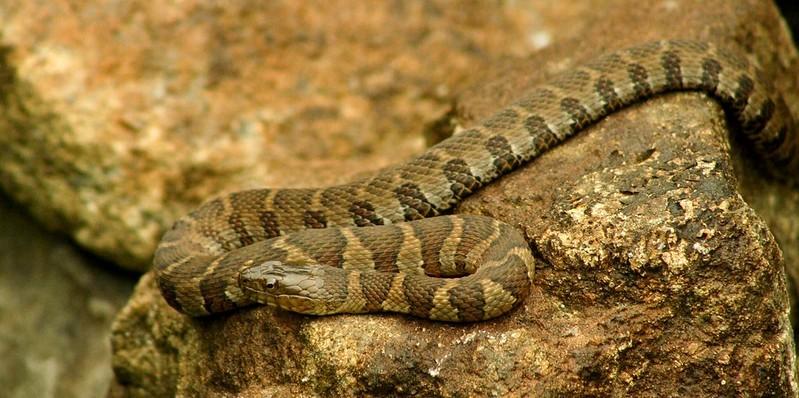
The northern water snake (Nerodia sipedon) is a species of nonvenomous water snake that is commonly mistaken for the venomous copperhead due to its similar appearance.
They are found throughout eastern and central North America, from southern Ontario and southern Quebec in the north to Texas and Florida in the south.
Northern water snakes range in size from 24 to 55 inches and are fairly dark-colored snakes that may be brown, tan, or grayish. They have a longer, more slender body and a flattened head the same width as the neck, round pupils, and no heat-sensing pits, which distinguishes them from copperheads.
Northern water snakes are often found in or near water, such as streams, rivers, lakes, and wetlands. When threatened, they defend themselves vigorously by striking and biting repeatedly, along with releasing excrement and musk.
Despite their aggressive reputation, northern water snakes are important predators that help keep nature in balance.
Eastern Hognose Snake
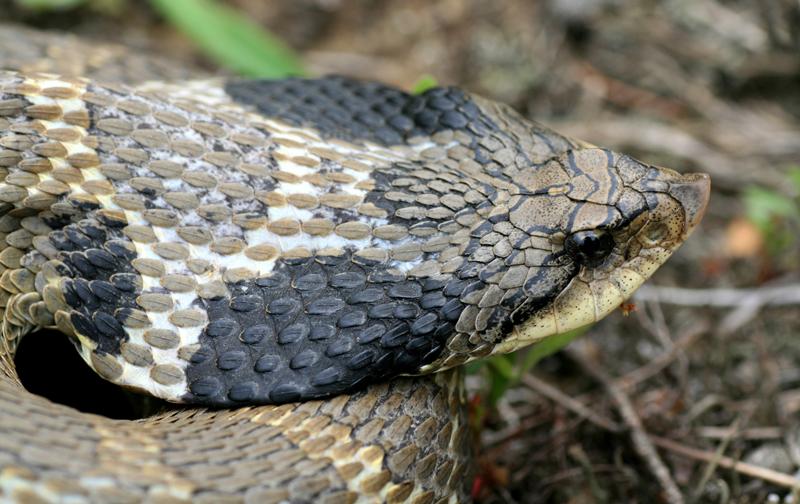
The eastern hognose snake (Heterodon platirhinos) is a species of mildly venomous rear-fanged snake that is commonly mistaken for the venomous copperhead due to its similar appearance.
They are found throughout eastern and central North America, from southern Ontario and southern Quebec in the north to Texas and Florida in the south.
Eastern hognose snakes prefer woodlands with sandy soil, fields, farmland, and coastal areas.
These snakes are stout-bodied with slightly upturned, pointed snouts, and their color pattern is extremely variable, ranging from mostly yellow, tan, olive, brown, gray, orange, or reddish-brown with large, dark brown or black, irregular-shaped blotches on the back and smaller blotches on the sides.
Some individuals may be entirely black or dark gray without any pattern. When threatened, the eastern hognose snake will flatten its neck and raise its head off the ground, like a cobra, and hiss and strike with its mouth closed, but it does not attempt to bite.
If this threat display does not work to deter a predator, it will often roll onto its back and play dead, going so far as to emit a foul musk from its cloaca and let its tongue hang out of its mouth. Eastern hognose snakes are docile animals that bluff and feign death to discourage potential predation against them.
Texas Brown Snake
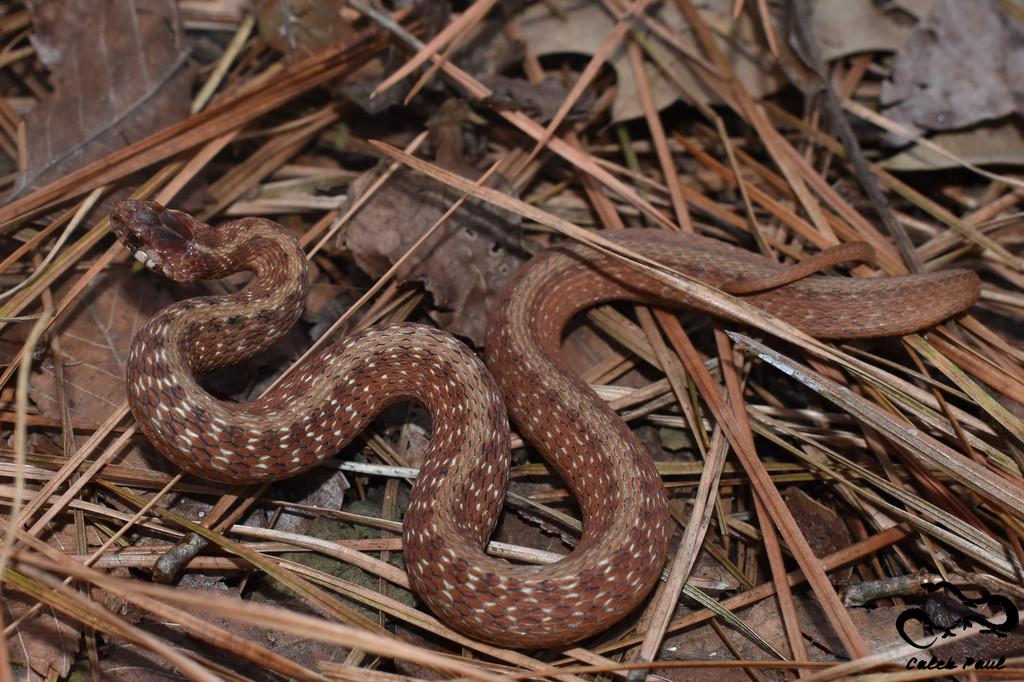
The Texas brown snake (Storeria dekayi texana) is a subspecies of brown snake that is commonly found in North America and is often mistaken for the venomous copperhead due to its similar appearance.
These non-venomous snakes are small and gentle creatures that are no threat to humans. They have reddish-brown colored bodies with dark brown spots around the eyes, and these occipital blotches are wider than in other subspecies of S. dekayi, and the fourth upper labial is usually darkened to a greater extent.
Adults average 30.5 cm (12.0 in) in total length, but may reach 48.3 cm (19.0 in) .
Texas brown snakes are found from southern Minnesota to eastern Texas and northeastern Mexico. They are often found in woodlands with sandy soil, fields, farmland, and coastal areas.
Read more : Discover The Top 10 Coolest Animals You Can Find Roaming Canada
The Texas brown snake is one of the eight snakes that look like copperheads, and it is important to differentiate them from copperheads to avoid killing them unnecessarily.
Eastern Milk Snake
The eastern milk snake (Lampropeltis triangulum triangulum) is a subspecies of the milk snake that is commonly mistaken for the venomous copperhead due to its similar appearance.
It is a nonvenomous, colubrid snake that is indigenous to eastern and central North America, ranging from Maine to Ontario in the north to Alabama and North Carolina in the south.
The eastern milk snake averages 60 to 91 centimeters (24 to 36 inches) in total length, although specimens as long as 132 centimeters (52 inches) in total length have been measured.
It has smooth and shiny scales, and its dorsal color pattern consists of brownish dorsal saddles, which are edged with black. The dorsal saddles are sometimes reddish or reddish-brown in southern areas of its range.
The eastern milk snake is often found in open country, ecotones, human habitats, and other areas where it can find prey, such as rodents and other small animals. Juvenile milk snakes are often killed because they are mistaken for copperheads, but one sure way to identify a milk snake is by the “V”, “U” or “Y” shaped blotch that is found on the back of the head.
The eastern milk snake is one of the eight snakes that look like copperheads, and it is important to differentiate them from copperheads to avoid killing them unnecessarily.
Diamondback Water Snake
The diamondback water snake (Nerodia rhombifer) is a species of nonvenomous water snake that is commonly mistaken for the venomous copperhead due to its similar appearance.
It is the largest North American water snake and is found predominantly along the Mississippi River valley, but its range extends from southern Illinois to the Gulf of Mexico and from eastern Texas to western Florida.
Appearance
– Predominantly brown, dark brown, or dark olive green in color, with a black net-like pattern along the back, with each spot being vaguely diamond-shaped.
– Dark vertical bars and lighter coloring are often present down the sides of the snake.
– The underside is generally a yellow or lighter brown color, often with black blotching.
– Adult body lengths usually range from 3 to 5 feet.
Habitat
– Diamondback water snakes are found in or near water, such as streams, rivers, lakes, and wetlands.
– They are frequently found basking on branches over water, and when approached, they will quickly drop into the water and swim away.
Behavior
– When foraging for food, the diamondback water snake will hang on branches suspended over the water, dipping its head under the surface of the water until it encounters a fish or other prey.
– If cornered, it will often hiss and flatten the head and body to appear larger. It only typically resorts to biting if physically harassed or handled.
The diamondback water snake is one of the eight snakes that look like copperheads, and it is important to differentiate them from copperheads to avoid killing them unnecessarily.
Banded Water Snake
The banded water snake (Nerodia fasciata) is a species of mostly aquatic, nonvenomous, colubrid snakes that are commonly found in the Midwest, Southeastern United States, and the Caribbean.
Appearance
– Adults of the banded water snake measure from 61.0 to 107 cm (24.0 to 42.1 in) in total length, with a record size (in the Florida subspecies) of 158.8 cm (62.5 in) in total length.
– They are mid-sized, fairly heavy-bodied semi-aquatic snakes with variable coloration, ranging from brown or grayish backs marked by reddish to dark brown crossbands extending.
Habitat
– Banded water snakes are mostly aquatic and are found in or near water, such as streams, rivers, lakes, and wetlands.
Behavior
– Banded water snakes are nonvenomous and harmless to humans.
– They are often killed by humans out of fear, as they are commonly mistaken for the venomous copperhead.
– Killing snakes greatly increases the chance of being bitten, and it is important to differentiate them from copperheads to avoid killing them unnecessarily.
The banded water snake is one of the eight snakes that look like copperheads, and it is important to differentiate them from copperheads to avoid killing them unnecessarily.
Black Rat Snake
The black rat snake (Pantherophis obsoletus), also known as the western rat snake, pilot black snake, or simply black snake, is a nonvenomous species of snake in the family Colubridae.
It is native to central North America and is one of the most common snakes found in the United States.
Appearance
– The black rat snake is a large snake that can grow up to 8 feet in length.
– It has a black, scaly body and a white belly and chin.
– Young black rat snakes, called hatchlings, are light gray with black blotches along the back.
Habitat
– Black rat snakes are found throughout the eastern United States, from New England south through Georgia and west to Kansas and Texas.
– They are commonly found in wooded areas, fields, and farmland.
Behavior
– Black rat snakes are nonvenomous and harmless to humans.
– They are often killed by humans out of fear, as they are commonly mistaken for the venomous copperhead.
– Black rat snakes are excellent climbers that are able to scale brick walls and tree trunks without any aid.
– They are shy and secretive animals that usually avoid humans.
The black rat snake is one of the eight snakes that look like copperheads, and it is important to differentiate them from copperheads to avoid killing them unnecessarily.
FAQS
1. Why are these snakes commonly mistaken for copperheads?
These snakes are commonly mistaken for copperheads because they have similar color patterns and markings.
2. Are these snakes venomous like copperheads?
No, most of these snakes are nonvenomous and harmless to humans.
3. Why is it important to differentiate these snakes from copperheads?
It is important to differentiate these snakes from copperheads to avoid killing them unnecessarily. Killing snakes greatly increases the chance of being bitten.
4. What should I do if I encounter one of these snakes?
It is best to leave all snakes alone and not attempt to handle them. If you are unsure of the species, it is best to observe the snake from a safe distance.
5. What are some physical characteristics that can help differentiate these snakes from copperheads?
Some physical characteristics that can help differentiate these snakes from copperheads include the shape of the head, the presence of heat-sensing pits, and the pattern of markings on the body.
6. What should I do if I encounter a copperhead?**
If you encounter a copperhead, it is best to give it a wide berth and leave it alone. Copperheads are generally not aggressive and will only bite if they feel threatened. If you are bitten by a copperhead, seek medical attention immediately.
Source: https://petstutorial.com
Category: Animals










